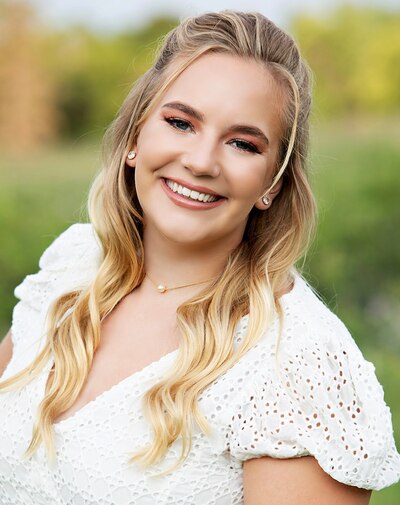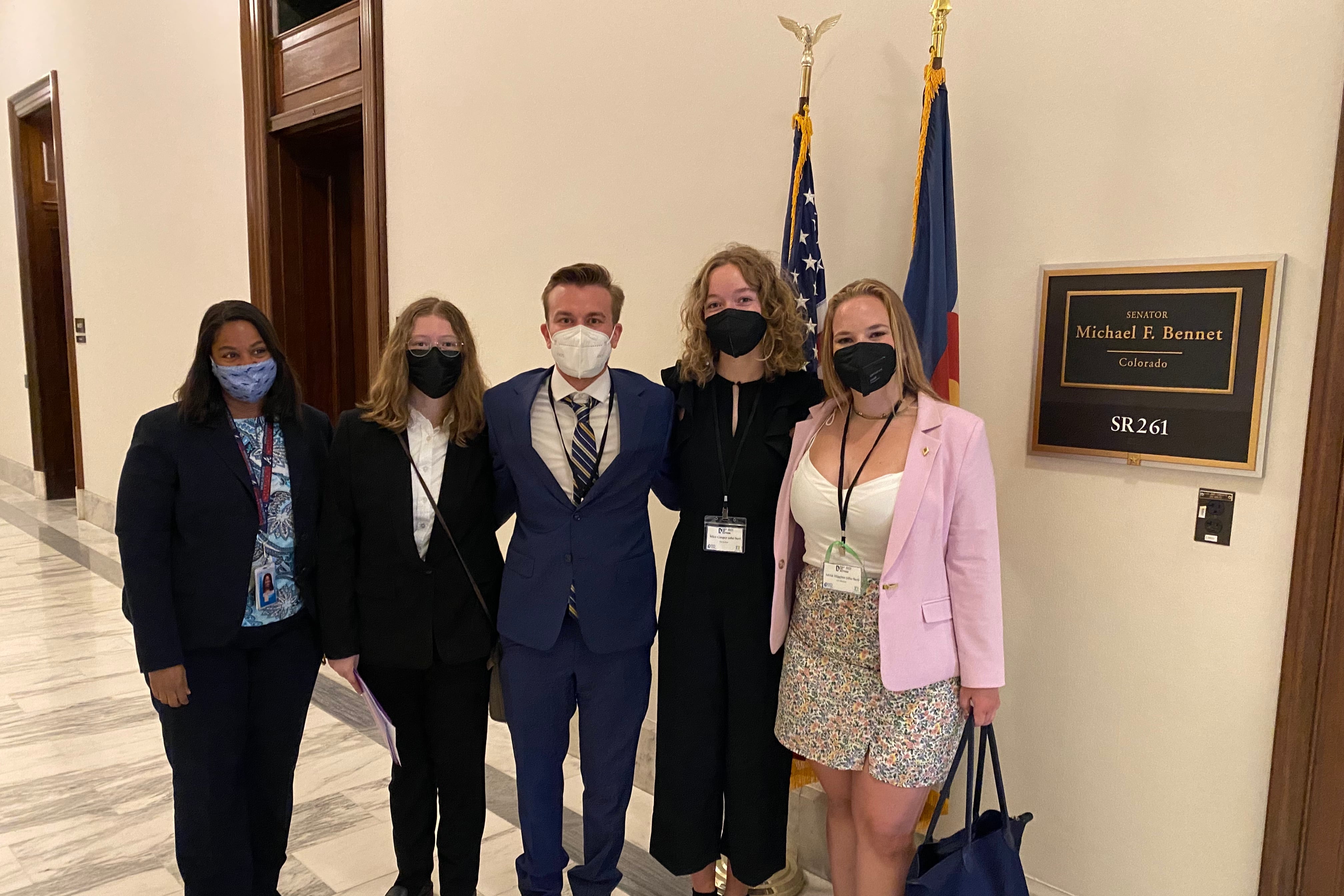About 150 high school and college students with ADHD, dyslexia, and other neurodiversities are set to gather this week in Denver at a conference about mentorship, leadership, and advocacy.
They’re involved with a national organization called Eye to Eye that trains older students with learning differences to mentor younger ones. Eye to Eye estimates that 20% of students have a learning difference.
Anna Higgins, a rising sophomore at Colorado State University, helped bring the Eye to Eye program to her high school, the private Dawson School in Lafayette, after she struggled to advocate for herself at a public middle school in Boulder. She learned about Eye to Eye from a friend and tutor, who Higgins said is “essentially the reason I can read today.”

The program helped Higgins, 20, hone her skills. Recently, she traveled with other students to Washington, D.C. to advocate for the passage of a bill called the RISE Act that would allow some college students with disabilities to more easily get the services and accommodations they need to help them be successful in the classroom.
We spoke with Higgins about her advocacy and the upcoming conference, the Young Leaders Organizing Institute, which starts Thursday at the University of Denver.
The interview has been edited for length and clarity.
Can you tell me a little bit about your learning difference and some of the struggles you faced in school?
I have ADHD, dyslexia, dysgraphia, and a slow processing disorder.
Middle school was really tough for me. That was when I had a lot of teachers who would say, “You can’t get these accommodations” or “I won’t give you extended time on the tests.”
High school was when I started coming back to teachers and saying, “No, I need this.” That was when I really started fighting for myself, but I’m glad I did. Because now that I’m in college, I’m much better at going in and advocating for myself to my teachers.
What was that experience [of having Eye to Eye at your high school] like? What did you all accomplish? How did you recruit other students [to mentor]?
Eye to Eye is a mentorship program based on an art-based curriculum. And then through that, the students learn about advocacy, metacognition, what exactly their learning difference is. [Because Dawson is a K-12 school, the high schoolers mentored the middle schoolers.]
At one point, I was feeling kind of down, and I was talking to [a staff member at the school]. And I was like, “Sometimes. I can’t tell if this is really doing anything because I know they come and they have a great time, but are they actually learning?”
She was like, “Well, a parent came up to me and talked about her child who was in Eye to Eye and how much more confident he feels in the classroom and how he looks forward to it every single Thursday.” I almost cried … to know that something I was doing was working.
What does that look like for a high school student to mentor a middle school student?
The most helpful connection that I saw and that I found was when these middle schoolers would say, “Oh, I’m not smart. I can’t focus,” all these negatives. These mentors would come back and be like, “I felt the same way. And now I have a 4.0 or I am on the track team.”
I think those were huge moments for the middle schoolers to be like, “Okay, so this isn’t the end of the world. Having this diagnosis isn’t something that’s going to deter me from succeeding later, that I can be like these people who have the same learning difference as me.”
It sounds like you were on the mentor side, but not the mentee side. What was your journey to advocacy?
I remember my freshman year, I had a biology teacher who just loved Cornell notes [a specific note-taking method] and insisted that this was the best way to take notes ever, for anyone at all. It doesn’t work for people who are neurodivergent, typically.
I went in and I showed her some notes that I took for a different class that I really succeeded in. And I was like, “Do you see how this isn’t organized even a little bit by your standards? But I got an A in that class and I’m failing yours, so let’s look at what the difference is here.”
And so that was the first time that I started advocating for myself. And then after that, I became a lot more confident in my ability to share why I need certain accommodations or what accommodations I needed, and that was a big turning point for me.
[At the conference], what does it feel like to be in a room with so many people who’ve had similar experiences?
The term “‘masking” is very popular within the neurodiversity community. [It means] you’re not necessarily bringing forward all of the things that make you learn differently on a day-to-day basis, like kind of hiding those certain social nuances.
And I always notice the first day [of the conference], I find myself kind of stressed and tense and I’m like, “Okay, I’m trying to figure out how to act with these people.” But then something switches and I’m like, “Oh, I can just let loose.”
If I have a random thought that pops in my head, I can just say it and everyone else would be like, “Yeah, me, too.” It’s this really great feeling of being able to be around all of these people where your brain, to others, goes on these entirely supposedly random tangents, but then you’re around 100 people who are like, “Yeah, I went the same way and I know how you got there,” which is a really amazing and beautiful thing.
Most education policy is made by adults. Eye to Eye and other groups are trying to get more youth representation into these discussions. What would you like to see?
In 5, 10 years, whatever it may be, [I’d like to see] that students don’t feel afraid to talk about these kinds of things. They don’t feel afraid to advocate for themselves. And I think we’re on that path.
Melanie Asmar is a senior reporter for Chalkbeat Colorado, covering Denver Public Schools. Contact Melanie at masmar@chalkbeat.org.






